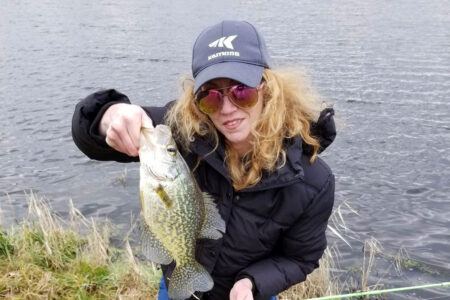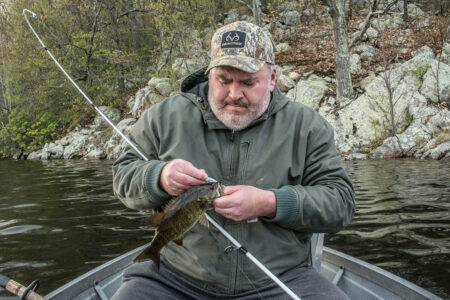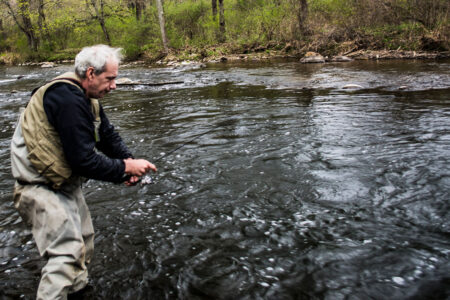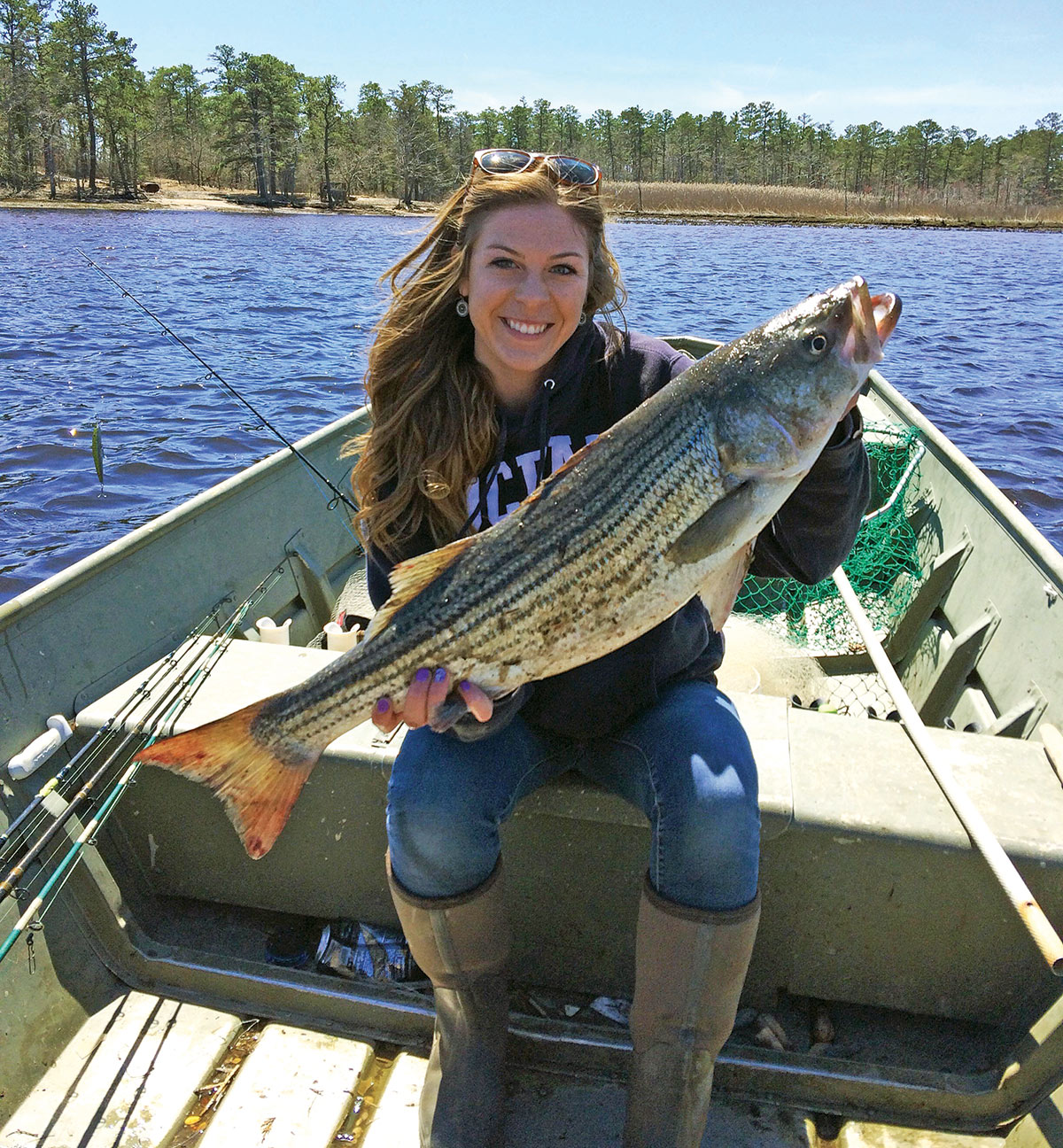
Fish those South Jersey drop-offs, creek mouths and sedges this month for spring striped bass.
April is here. Time to talk fishing; more specifically, back bay and river fishing targeting my favorite species, striped bass! While fishing for stripers varies from state to state, I’d like to share a little knowledge with what I’m familiar with most. I’ve lived in New Jersey all my life, and know a thing or two about where to look, what to use, and the best time to hunt down those sought-after stripers, particularly in the lower half of the Garden State.
Stripers in southern New Jersey live most of their adulthood in saltwater, however when it’s time to spawn they make their ways into our estuaries. Eventually, they migrate into the freshwater, tidal rivers. In the course of their spring spawning migration it’s often the best opportunity for anglers to strike, especially after the spawning takes place, and the fish slowly return to their salty marine lifestyle.
The striped bass spawning migration takes place during the same time as the river herring spawn, as stripers prey heavily on herring; it can make for an all out blitz when the two coincide. To take advantage of this occasion, fishermen (and women) can hop in their boat or simply fish off the shoreline.
By Boat or Beach
When I go out for spring stripers by boat, I like to make sure I’m prepared for whatever is going to come my way. In doing so, I make sure I’ve got a couple med-heavy to heavy rods with durable reels with good drag systems. Also, make sure that you throw some 30- to 40-pound leader in your tackle bag, along with all the other staples such as: hooks, needle-nose pliers, 4- to 6-ounce sinkers and the like.
When targeting these fish, I use 10/0 octopus hooks and 4/0 baitholder hooks. You’re probably thinking, what in the world are you going to need 10/0 hooks for? Well, since the herring have effectively been outlawed, there’s always small perch right? Go catch yourself a perch and liveline that little guy. A nice size striper is bound to come along and swallow it whole, and when he does, set the hook!
The smaller, 4/0 baitholder hooks are used for the common bloodworm, which is also bound to give you the opportunity at a striped bass. When using the bloodworm as bait, make sure to have your 4- to 6-ounce sinker on there to hold it in place. If bloodworms aren’t in the budget, clams will also do the trick with the same set-up.
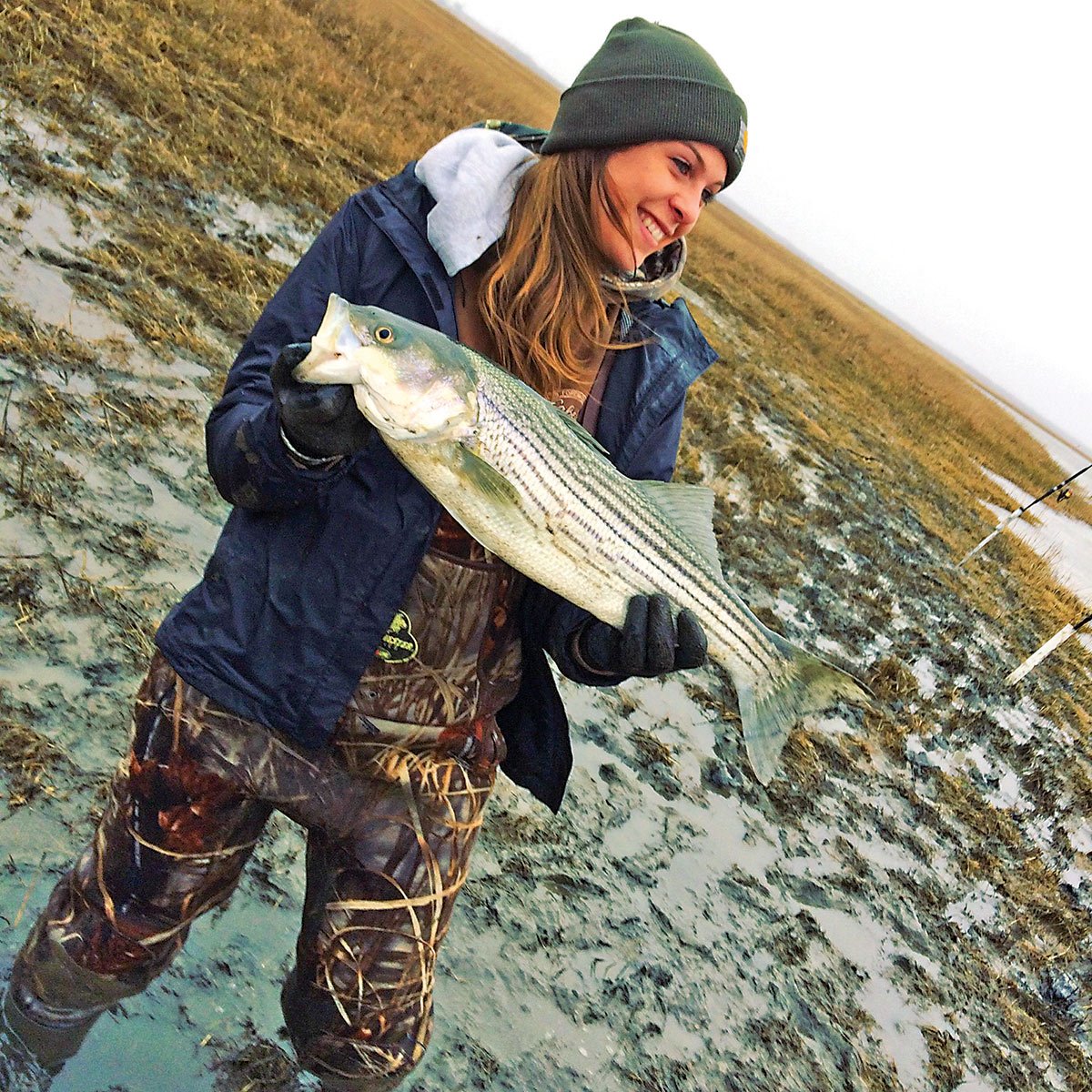
While fishing from the bayshore, a lighter rod can be used, although not too light. Of course you can use bloodworm or fresh sea clams when fishing from the bank, however lures and plugs are commonly used. When trying to figure out what to buy, I like to think about things that resemble a river herring. In this case, Rat-L-Traps and minnow plugs work phenomenally. I personally find it worth the money to invest in Daiwa SP Minnows as I’ve had most of my luck using these fast moving, side-to-side swimming action lures. The colors that seem to attract the most popularity while I’m fishing are mother of pearl or purple back/silver.
When casting out with your minnow plug, make sure to reel in at a moderate pace. Take into consideration that you aren’t fishing for bluefish. Though stripers can have their feisty moments, for the most part they are slow-moving, lethargic, opportunistic feeders.
On the Hunt
When taking the boat out on the river, especially during the spring, I usually like to head more towards the freshwater part of the river where I know they will be. While heading out, make sure to slow down and take your time; this way, more observations can be made and you may have a better chance at spotting some herring or another pod of baitfish jumping around. If you do happen to spot some, break out your spinning rod and throw out a lure!
If you don’t happen to spot any attractions, keep in mind the bass tend to hang around the edges of the river where it’s shallow. In these shallows, the water is generally warmer than the channel and where most of the spawning takes place. There have been many times I’ve been out on the boat during the spawn when I have spotted the bass actually rolling on the surface near the banks. It is quite a sight to see, however most of those larger fish on the surface are females who are full of eggs.
So many other aspects go into the equation, which all influence how a striped bass is going to react. If you have the advantage of using a fishfinder, try to look for a change in bottom, drop-off or an obstruction under the surface to fish. When you find an obstruction on the bottom, it is likely that an eddy is going to form. With these eddies, you will notice that the current increases in pace as it travels around the obstruction and on the backside a level of calmness in the current will appear. That is where you want to throw a line in.
Not to worry if you do not have a fishfinder, there are other more obvious objects that can help create an eddy. Be on the lookout for things such as a dock, pier, bridge, or rockpile. If possible when casting out, try to cast upstream of the eddies. In most cases, the bass wait downstream while facing upstream looking for their chance to strike.
The Ambush Points
A majority of the fishing I do is trial and error, although some is just common knowledge. In light of migration, think about where the fish are eventually going to have to cross. If other tactics aren’t working, go directly to the mouth of the river if you can. I usually fish the point where the bay meets the river knowing that at some point they have no other option but to swim by. At that point, I generally fish right off the bank with bloodworms or clams and simply wait.
Despite the fact that I have talked mostly about springtime river fishing, I do frequently fish the rips when I can. You can find a rip where waters of opposite directions encounter each other causing rough water to develop. The best times to fish the rips in South Jersey (think Cape May) has typically been in the fall by drifting across them with an eel. When using an eel for bait, liveline it and just let it bounce along the structured bottom using about an arm’s length of 30- to 40-pound test leader.
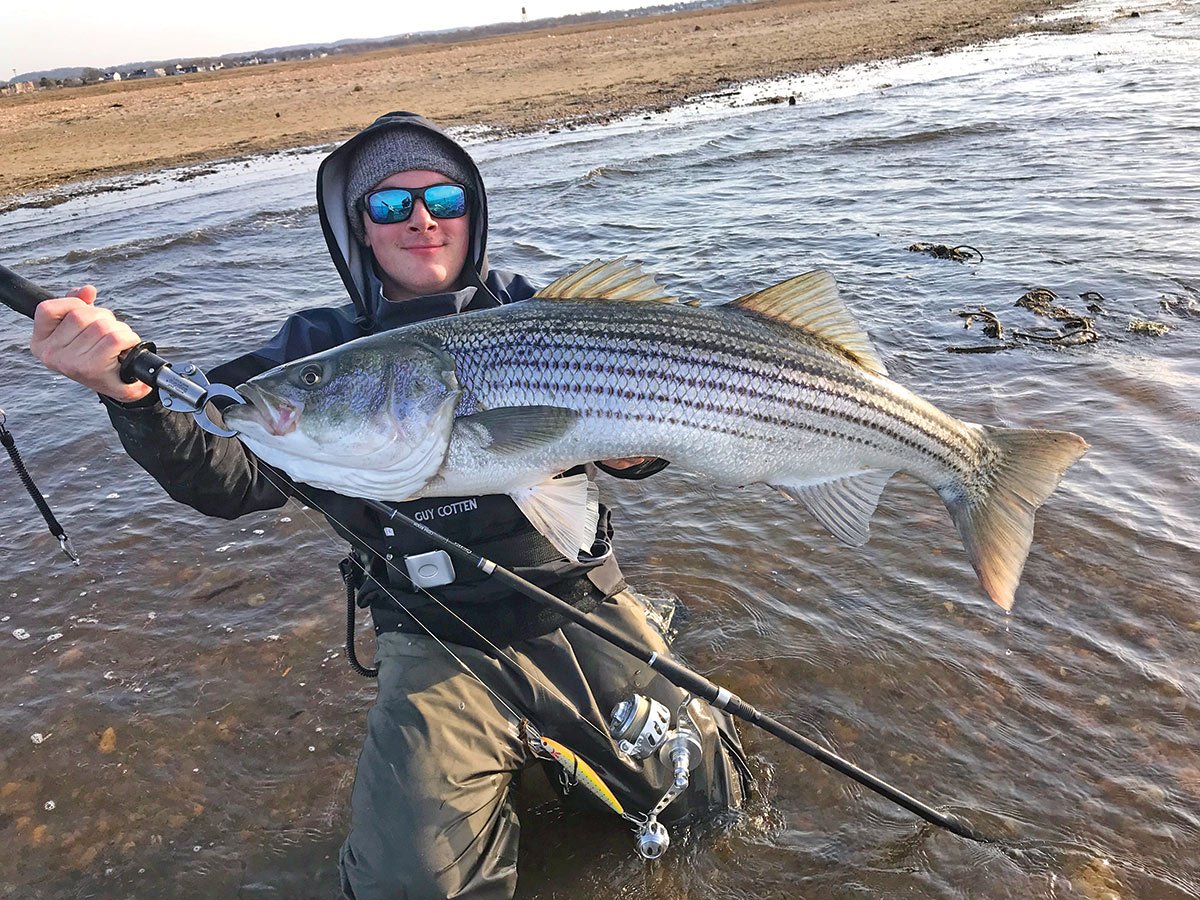
Other times I’ve used eels for drifting over an oyster bed, which makes for great structure and house plenty of small bottom-dwelling critters that ultimately attract larger species like striped bass. There have been many times the oysters’ sharp edges have sheared off my line, so a stronger leader when fishing over oysters is never a bad idea. A man-made oyster reef was produced last year in the southern part of the Barnegat Bay watershed, which is going to provide a substantial habitat for many species including bass. I am very excited to get out and drift over top of it and see the results.
Now in terms of the tide, a majority of people and discussions propose that the outgoing tide is best for bass fishing. I do agree in some way, however I have found the prime time to be there with a line out is during the slack tide. This means, be there an hour before slack tide as well as an hour after. The bass may not be at their peak feeding time during slack tide, though they are most mobile during this period of time.
During slack tide, the larger cows will be on the prowl mainly because they don’t have to exert so much energy to fight the current. I also recommend slack tide because it is when most fish will reposition and cover a lot of ground as they await the next tide to flow through. Slack tide has been the most productive for me when it comes to larger fish. The smaller, more energetic schoolies will stay active throughout the tides and more commonly known feeding hours.
Remember to approach new ideas with an open mind; but don’t over-complicate it either. Just go fish!
